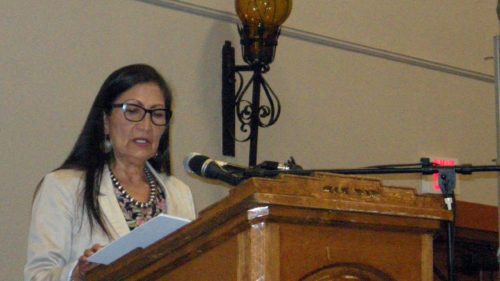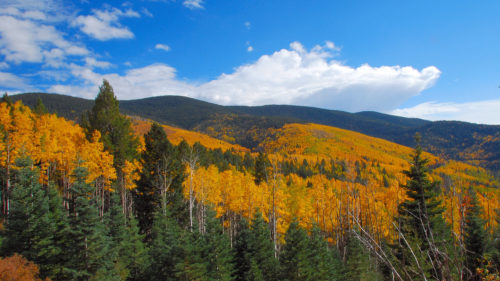The drought has taken a terrible toll on native trout species. Reduced precipitation and increased average air temperatures cause lower stream levels, warmer water and fire, and in New Mexico those factors have caused the Gila and Rio Grande cutthroat trout to lose ground. Along with Trout Unlimited, New Mexico Trout, New Mexico Wildlife Federation, several pueblos and other agencies, Game and Fish is working on several projects to move the arrow in the opposite direction.
The Whitewater Baldy and Silver fires eliminated trout of all kinds throughout much of the Gila River watershed, including a conservative estimate of about 35 miles of streams occupied by Gila trout. Trout Unlimited will assess the fires’ damage to Gila trout habitat and identify streams that could be restored. David Propst, the former NMDGF Native Fish Supervisor and a collaborator on the project, said the big fires were major setbacks for Gila trout. At the same time, he added, “the fires eliminated non-native trout in streams previously identified to be potential Gila trout habitat. These are new opportunities.”
On the eastern side of the Gila, Game and Fish is moving forward on restoring Rio Grande cutthroats in Las Animas Creek. Like many cutthroat projects, the effort will use fish-specific poison (piscicide) to remove non-natives. Piscicide use has proven to be safe and effective as a means of restoring native fish. In September the U.S. Fish and Wildlife Service could list Rio Grande cutthroat under the Endangered Species Act, a decision with dire consequences for New Mexico’s sportsmen and tourism industry.
In addition to its restoration projects, Game and Fish is working to create recreational native fisheries so the public can reacquaint itself with the trout that make our state unique. With the help of volunteers, the department stocked 6,500 cutthroat fingerlings in the Rio Grande Gorge in March. It is also exploring stocking Gila trout – both catchables and fingerlings – in their native region. In the Rio Costilla drainage, past restoration involved barrier construction, habitat improvement and piscicides. The Costilla remains the cutthroat’s stronghold as a result, as well as a viable location for future projects.
Frey said he wants New Mexicans to have a variety of angling opportunities, and he believes in being realistic about the true value of certain resources. The San Juan, for example, is valuable as a recreational fishery of the highest quality. Habitat improvements, such as the recent pool and braid development above Texas Hole, the wetlands near Munoz and the current project on the Hammond reach, should be done to provide anglers a superlative trout fishing experience. The river may not be the place for native trout restoration.
Similarly, Frey understands the urgency of improving fisheries for the fish themselves. “Natives have intrinsic value, and so do stream-born browns and rainbows that populate many New Mexico waters.”
Game and Fish takes an “all of the above” approach to fishery management, which will be spelled out in the Aquatic Operations Plan the department expects to complete soon. “Some waters absolutely must be managed for native trout. In other places, we should maintain anglers’ ability to harvest fish. We’ll have to take care of threatened and endangered species too,” he said.
Taking a drainage by drainage perspective, the department plan will guide management into the future, ensuring that our fisheries reflect the wide-ranging values of New Mexico anglers as well as sound scientific principles.
Toner Mitchell of Santa Fe is a lifelong New Mexico angler, guide and author of the fishing blog “Truchacabra.” He is also the New Mexico Public Lands Coordinator for Trout Unlimited and a frequent contributor to the Outdoor Reporter.



